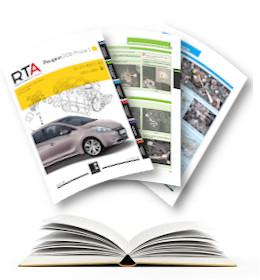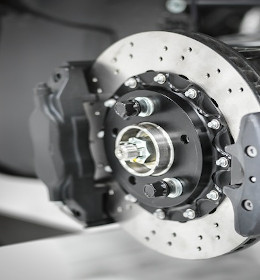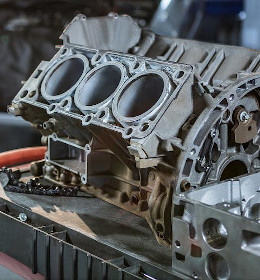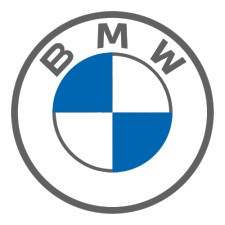Que signifie votre code Code Défaut OPEL ?
Grace au système OBD, les
Opel
fabriqués après 1996 sont normalement équipés d'une prise diagnostique OBD.
Si l'ordinateur de la voiture rencontre un problème,un code d'erreur ou un code de diagnostic (DTC)
sera stocké dans la mémoire de l'ECU de la voiture.
Avec un lecteur OBD branché sur le port OBD (On-Board Diagnostics) de la voiture, vous pouvez lire la liste des codes stockés, et donc découvrir quel est le problème.
Les codes suivent une formule permettant de savoir généralement quel est le problème avant même de regarder le tableau ci-dessous.
Nous vous présentons ci-dessus une liste très complète des différents codes défauts possibles.
Si le code défaut de votre auto s'affiche au tableau de bord, vous n'aurez peut-être même pas besoin d'un lecteur OBD . il sera dans la liste .
Réparer le code défaut de votre auto, c'est potentiellement simple à faire avec vos revues et méthodes techniques.

Réparer le code défaut de votre auto, c’est potentiellement simple à faire avec nos revues et méthodes techniques
| Code | Libellé |
|---|---|
| P1633 | Injection Pump Malfunction |
| P1634 | Injection Pump Malfunction |
| P1635 | 5V Reference |
| P1635 | Battery voltage range/performance |
| P1635 | Glow device circuit, general fault |
| P1635 | Renew the electronic control unit |
| P1636 | Immobiliser Wrong Signal |
| P1638 | Immobiliser Wrong Signal |
| P1639 | 5V Reference Circuit 3 High Voltage |
| P1639 | 5V Reference Circuit 3 Low Voltage |
| P1639 | Sensor voltage supply circuit 2 range/performance |
| P1639 | 5V Reference #2 Circuit |
| P1640 | Control Mode Power Circuit Malfunction |
| P1643 | Starter Relay Circuit Low Voltage |
| P1643 | Starter Relay Circuit Open or High Voltage |
| P1646 | 5V Reference #3 Circuit |
| P1648 | Immobiliser Fuel Enable Incorrect Signal |
| P1648 | Immobilizer Security Code Incorrect |
| P1649 | Immobilizer Security Code Not Programmed |
| P164E | Fuel Injector Control Module Engine Controls Ignition Relay Circuit Low Voltage |
| P164F | Fuel Injector Control Module Engine Controls Ignition Relay Circuit High Voltage |
| P1650 | CAN: Device Offline |
| P1650 | Malfunction Indication Lamp (MIL) Powerstage High Temperature |
| P1650 | Service Vehicle Soon Light Circuit Open |
| P1650 | Service Vehicle Soon Light Voltage High |
| P1650 | Service Vehicle Soon Light Voltage Low |
| P1650 | Service Vehicle Soon Light Powerstage High Temperature |
| P1651 | CAN Transmits Error |
| P1651 | CAN Receives Error |
| P1651 | Injection Pump EEPROM Communication Error |
| P1651 | Injection Pump: CAN Malfunction |
| P1651 | Injection Pump EEPROM Malfunction |
| P1651 | Injection Pump Malfunction |
| P1656 | Oil Pressure Telltale Voltage Low |
| P1656 | Oil Pressure Telltale Voltage High |
| P1657 | Oil Level Telltale Circuit Open |
| P1657 | Oil Level Telltale High Voltage |
| P1657 | Oil Level Telltale Low Voltage |
| P165A | Replace Electronic Control Unit (ECU) |
| P1660 | Fuel Cutoff Valve Malfunction |
| P1660 | Fuel Cutoff Solenoid Malfunction |
| P1660 | Fuel Cutoff Solenoid Valve Malfunction |
| P1666 | O2 Sensor Malfunction |
| P1677 | Fuel System Switch LED Circuit Open or Low Voltage |
| P1677 | Fuel System Switch LED Circuit High Voltage |
| P1677 | Immobilizer System Disabled |
| P1678 | ECM (Engine Control Module) Identification Failed |
| P1679 | CIM (Steering Column Module) Wrong Environment Identifier |
| P1679 | Wrong Environment Identifier Received BCM (Body Control Module) |
| P167A | Control Module HO2S 1 System Performance |
| P167D | Control Module Ignition Coil Internal Circuit |
| P1680 | Accelerator Pedal Position Sensor Circuit Malfunction |
| P1680 | Coolant Temperature Output Signal Voltage Low |
| P1680 | Coolant Temperature Output Circuit Voltage High |
| P1681 | TPS Monitoring Fault (Throttle Position Sensor) |
| P1682 | Ignition 1 Switch Circuit 2 |
| P1682 | Ignition Switch Circuit Malfunction |
| P1682 | Main Relay Stuck in Open Position |
| P1683 | Internal ECU Error |
| P168E | Fuel Injector Control Module Not Programmed |
| P168F | Fuel Injector Control Module Read Only Memory |
| P1690 | Malfunction Indication Lamp (MIL) Circuit High Input |
| P1690 | Service Vehicle Soon Telltale High Voltage |
| P1690 | Service Vehicle Soon Telltale Low Voltage |
| P1690 | Service Vehicle Soon Light Circuit Open |
| P1690 | Malfunction Indication Lamp (MIL) Circuit Open |
| P1699 | Hardware/software not compatible |
| P16A7 | Engine Controls Ignition Relay Feedback Circuit 2 |
| P16B4 | Fuel Injector Control Module 5V Reference Circuit |
| P16B5 | Fuel Injector Control Module Random Access Memory |
| P16B6 | Fuel injector Control Module Long Term Memory Performance |
| P16E2 | Battery Sensor Module Read Only Memory (ROM) |
| P16E9 | Control Module Serial Peripheral Interface Bus 2 |
| P16EA | Control Module Serial Peripheral Interface Bus 3 |
| P16EC | Control Module Serial Peripheral Interface Bus 5 |
| P16ED | Control Module Serial Peripheral Interface Bus 6 |
| P16ED | Control of the high pressure fuel flow regulator : Application of an electrical current which is not plausible |
| P16EE | Control Module Serial Peripheral Interface Bus 7 |
| P16EF | Control Module Serial Peripheral Interface Bus 8 |
| P16F0 | Control Module Serial Peripheral Interface Bus 1 |
| P16F3 | Control Module Redundant Memory Performance |
| P1700 | Service vehicle soon (SVS) request from the transmission control unit (TCM) |
| P1700 | Transmission Control Module (TCM) Requested SVS Illumination |
| P1702 | Internal Control Module Memory Checksum Error |
| P1703 | Brake light switch malfunction |
| P1711 | Front Left Wheel Speed Sensor Signal Malfunction (CAN) |
| P1712 | Front Right Wheel Speed Sensor Signal Malfunction (CAN) |
| P1722 | Gear selector serial data |
| P1725 | Engine Speed Output Voltage Low |
| P1725 | Engine Speed Output Voltage High |
| P1732 | Transmission Control Module Ignition Circuit |
| P1739 | Replace Electronic Control Unit (ECU) |
| P1740 | Replace Electronic Control Unit (ECU) |
| P1740 | Torque Control Voltage Low |
| P1751 | Shift Valve 1 Performance |
| P1779 | Engine torque signal malfunction |
| P1780 | Engine torque reduction malfunction |
| P1790 | EPROM / ROM Transmission Side Bad Checksum |
| P1791 | Gear Shift Motor (End of Line) |
| P1792 | EEPROM Transmission Side Bad Checksum |
DEFINISSEZ VOTRE MARQUE POUR ACCEDER A VOS CODES DEFAUTS
-
Revue technique RTA

Revue Technique Automobile
La revue technique de référence depuis 1946. La RTA est une revue papier pour tous publics, qui vous permet d'effectuer les petites et les grosses réparations
 Voir le descriptif
Voir le descriptif
-
Entretien courant MTA

Méthode Technique Automobile
La MTA est issue de nos outils destinés aux pros de l'auto. Ces méthodes en ligne permettent d'effectuer les opérations de maintenances de votre auto (filtres, courroies, etc.)
 Voir le descriptif
Voir le descriptif
-
Toutes réparations MTAx

Méthode Technique Automobile Expert
La MTA expert est un outil en ligne destiné aux experts en mécanique et en carrosserie, pour effectuer tous types de réparations sur une voiture.
 Voir le descriptif
Voir le descriptif















